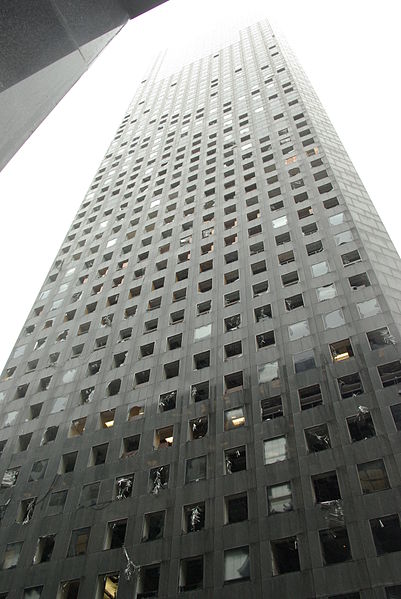August 23, 1992 (10:00 PM EST):
For 66 years, Miami had been living on borrowed time, and most of its residents knew it. Situated at the tip of South Florida in one of the most hurricane-prone areas in the world, the city had avoided a direct hit from major hurricanes since the Great Miami Hurricane of 1926. Since then, the city's population had quadrupled, while the metro area as a whole had experienced even more explosive growth. In 1992, the Miami metro area had more than 4 million people, it was a world city in every sense of the world, and continued to grow as more and more people flooded into the city, one of the most beautiful in North America.
Hurricane Andrew now loomed, posing the biggest threat the city had ever faced. The massive storm was reported to be a Category 4, but as meteorologists tracked the storm on its final approach toward South Florida, they realized in horror that the storm had begun a rapid intensification as it crossed Eleuthera Island in the Bahamas. Its pressure had dropped to 926 millibars and though its last estimated wind measurement was 145 miles per hour, no one really knew just how fierce the storm was until it actually crossed onto land.
The scariest thing that those tracking the storm noticed, however, was that the storm had taken the tiniest of jogs to the north as it made its final approach. Those in Miami who still had electricity could see it on the live weather reports, the storm was edging north as it approached the coast. The eye was heading right toward downtown Miami.
(NOTE: This TL, as you can tell, alters the course of Hurricane Andrew as it approaches landfall, taking it right into downtown Miami instead of making landfall further south in Homestead. As you can tell from the title, I have other plans for this storm as well as it makes its way toward the Gulf Coast. This is my first TL, so any advice/criticism you might have is welcome, no matter how harsh ).
).
For 66 years, Miami had been living on borrowed time, and most of its residents knew it. Situated at the tip of South Florida in one of the most hurricane-prone areas in the world, the city had avoided a direct hit from major hurricanes since the Great Miami Hurricane of 1926. Since then, the city's population had quadrupled, while the metro area as a whole had experienced even more explosive growth. In 1992, the Miami metro area had more than 4 million people, it was a world city in every sense of the world, and continued to grow as more and more people flooded into the city, one of the most beautiful in North America.
Hurricane Andrew now loomed, posing the biggest threat the city had ever faced. The massive storm was reported to be a Category 4, but as meteorologists tracked the storm on its final approach toward South Florida, they realized in horror that the storm had begun a rapid intensification as it crossed Eleuthera Island in the Bahamas. Its pressure had dropped to 926 millibars and though its last estimated wind measurement was 145 miles per hour, no one really knew just how fierce the storm was until it actually crossed onto land.
The scariest thing that those tracking the storm noticed, however, was that the storm had taken the tiniest of jogs to the north as it made its final approach. Those in Miami who still had electricity could see it on the live weather reports, the storm was edging north as it approached the coast. The eye was heading right toward downtown Miami.
(NOTE: This TL, as you can tell, alters the course of Hurricane Andrew as it approaches landfall, taking it right into downtown Miami instead of making landfall further south in Homestead. As you can tell from the title, I have other plans for this storm as well as it makes its way toward the Gulf Coast. This is my first TL, so any advice/criticism you might have is welcome, no matter how harsh


